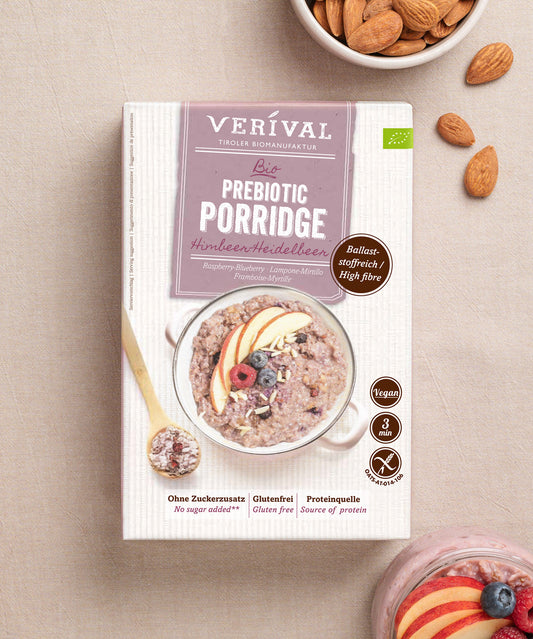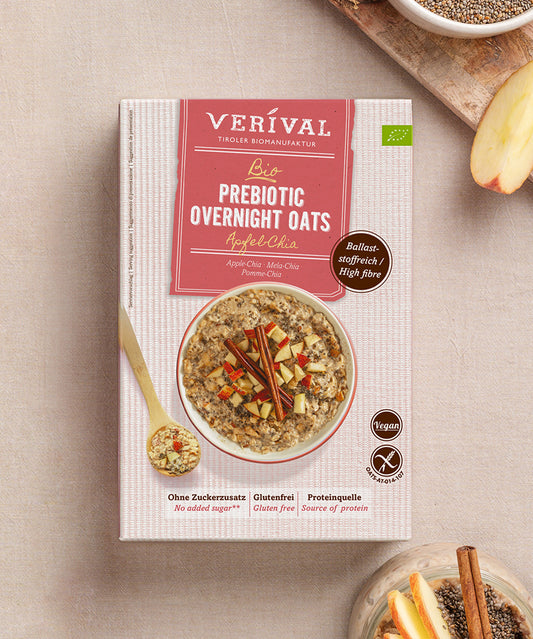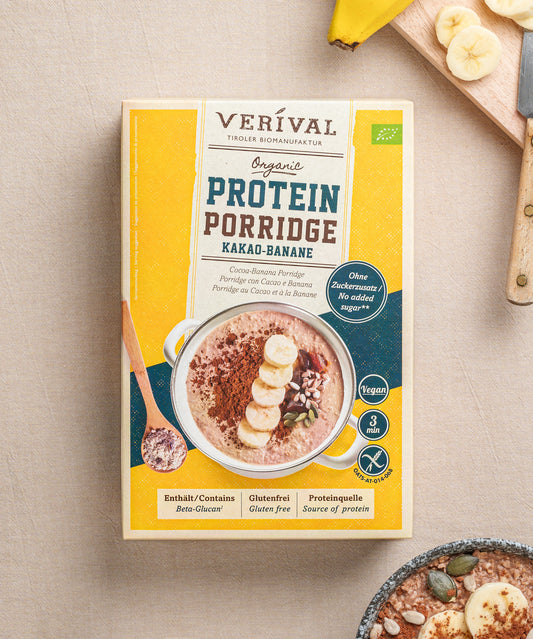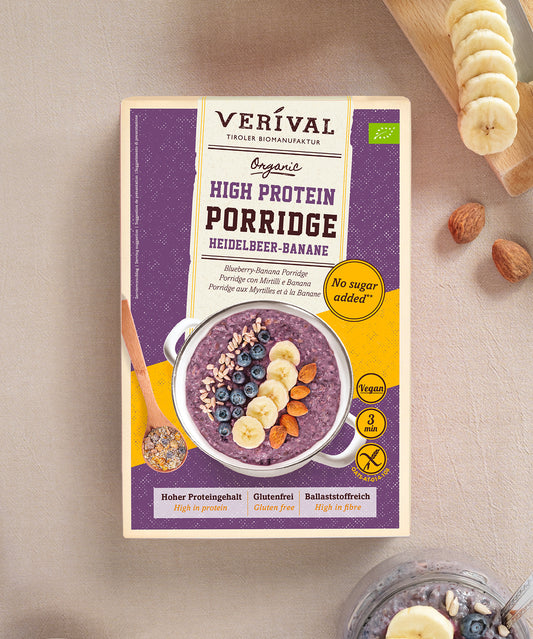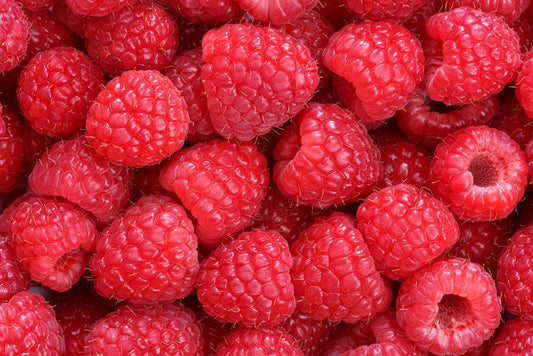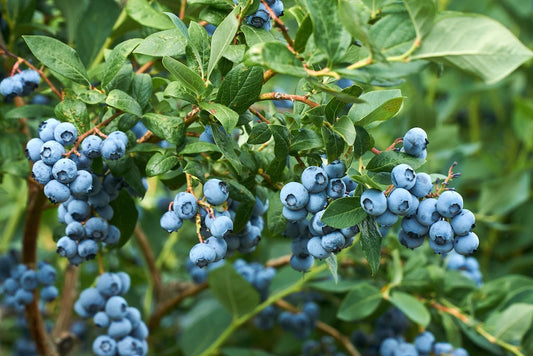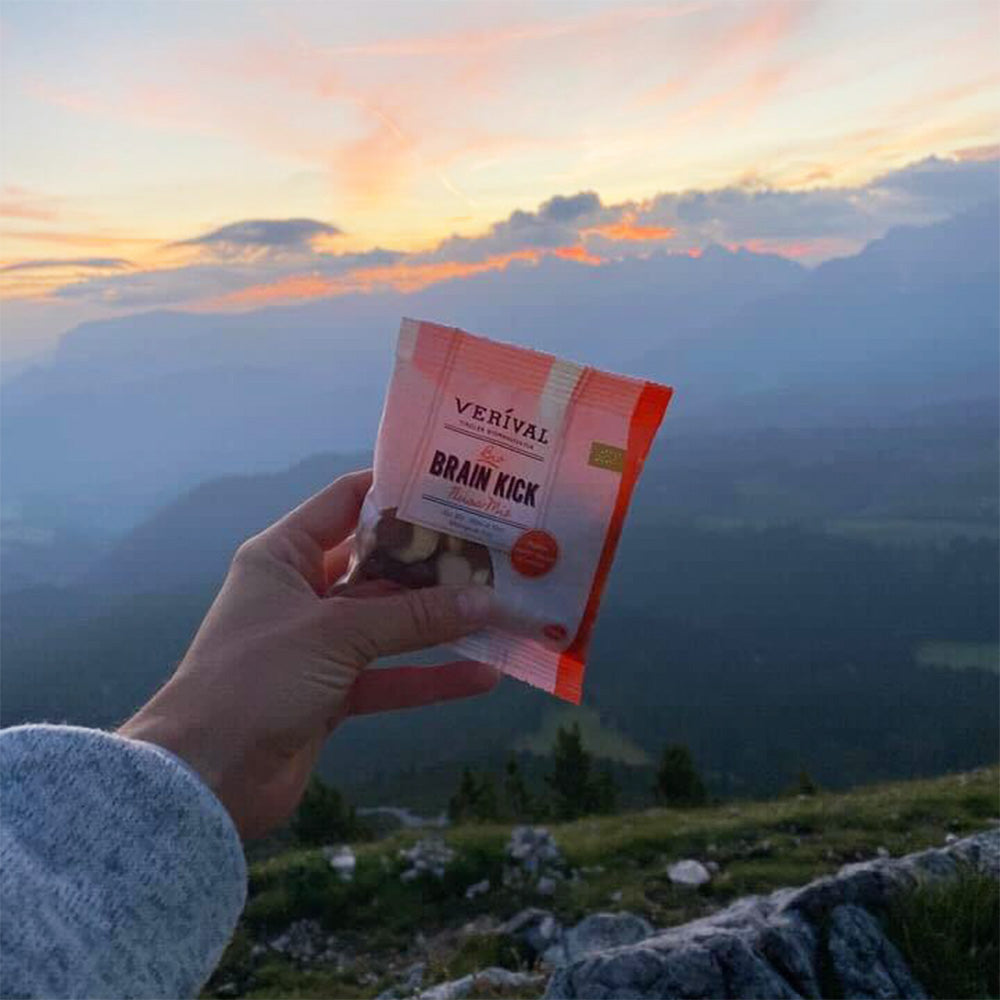There is hardly anyone who does not like the small blue berries. The blueberries. These delicious fruits are among the most popular berries of all, along with currants, strawberries, raspberries, cranberries and blackberries. Blueberries taste good and are good for you. Blueberries are healthy fruits. What's more, blueberries are versatile fruits that can be enjoyed in many ways.
The bilberry or whortleberry (Vaccinium myrtillus) belongs to the heather family. The dark flesh of the bilberry turns the tongue and teeth blue – much to the amusement of children. The cultivated bilberry is descended from the American highbush blueberry (Vaccinium corymbosum). Blueberries have light-coloured flesh. This means that they do not turn blue when eaten.
Find out everything you need to know about berries here
Where do blueberries grow?
These healthy berries love Nordic and temperate regions (Eurasia), especially mountainous areas. In Austria and Switzerland, blueberries grow at altitudes of up to 2400 metres. Blueberries prefer partial shade and coniferous forests in particular.
However, the soil must be acidic (pH below 5), nutrient-poor and base-deficient for blueberries and other fruits like blueberries to grow. In addition, blueberries can also be found on mountain moors and moors. Blueberries can take root up to 1 m deep. However, blueberries are sensitive to cold and pollutants. With a thick blanket of snow, however, blueberries can easily thrive at an altitude of 2400 m. They are a hardy fruit.
Wild blueberries
Wild blueberries taste particularly good. Especially in the Tyrolean mountains, you can still find blueberries growing wild today. Blueberries grow on dwarf shrubs that are 10 to 60 cm high. The leaves of the blueberry are egg-shaped and finely toothed. Fresh blueberries are available between July and September. In autumn, the leaves of the blueberry turn deep red. In winter, the blueberry bushes have no leaves.
Blueberry bushes can live up to 30 years. The blue colouring of the native bilberry (Vaccinium myrtillus) comes from anthocyanins, which are found in the flesh and skin. In the cultivated bilberry, which comes from the American varieties (Vaccinium corymbosum), the pigment is only found in the skin. This is why eating bilberry does not cause discolouration.
You can tell the origin of the blueberries by the fact that the American variety is twice as large as the native variety. Although blueberries taste less juicy, they keep longer. Caution: the leaves of the blueberry plant contain hydroquinone and arbutin and are therefore poisonous!
Cultivated blueberries
Cultivated blueberries are descended from the American blueberry (Vaccinium corymbosum). You can recognise them by the fact that they are twice the size of the Eurasian variety. These berries do not leave any blue colouring or stains, as the inside of the blueberry fruit is light in colour. Fresh blueberries are not bad, but they are nowhere near as good as, for example, blueberries from the mountains of Tyrol.
Natural remedies: the history of blueberries
Blueberries have always grown in native coniferous forests. However, they were not available for purchase in supermarkets, which is why these delicious berries were cultivated and further developed in America. Since then, blueberries have been available everywhere in America. In natural medicine, blueberries were already successfully used in the Middle Ages.
Dried blueberries are used successfully to treat diarrhoea and retinal diseases as well as inflammations of the mouth and throat. Teas, gargles and mouthwashes are made from the dried berries. Dried blueberries are particularly prescribed for young children suffering from diarrhoea.
Discover the variety of porridge from Verival
For internal use, 2 tablespoons of dried bilberries are boiled with 150 ml of water for about 10 minutes and then strained. Drink 1 cup of freshly prepared and cooled blueberry tea 1 to 3 times a day. Teas made from blueberries can also be prepared by soaking the dried fruits in cold water for two hours.
You can also take the dried berries with liquid. For a mouthwash or to gargle, boil a tablespoon of dried blueberries with 100 ml of water for 10 minutes and strain. If the solution is cold, you should gargle or rinse several times a day with blueberries.
Blueberries contain a high proportion of tannins, plant acids, flavonols and poranthocyanidins. They also contain phytochemicals. Fresh blueberries also contain vitamin B1 and vitamin C, nicotinamide and pantothenic acids. These fruits are real vitamin bombs.
The anthocyanins that cause the blue colouring have always been considered an anti-aging secret. This active ingredient in blueberries protects against viruses, fungi and bacteria. So far, no side effects of the fruits are known. However, if blueberries are enjoyed in large quantities, they act as a natural laxative.
In addition, blueberries bind free radicals through the polyphenols they contain and are effective against cardiovascular diseases and blood sugar. Blueberries strengthen the nervous system and blood vessels. Just like cranberry, blueberries prevent bacteria from attaching to human cells.
Superfood blueberry
Blueberries boost your metabolism and give you vitality. They can be enjoyed with a healthy breakfast of muesli, granola, porridge or juice. But don't forget the oats. Blueberries taste just as good in a delicious fruit salad as they do in a tasty blueberry pie.
How healthy are blueberries?
The pigments in the blue berry are the real ‘health boosters’. Blueberries belong to the group of anthocyanins, which are chemically polyphenols. Blueberry is broken down again after six hours in the blood. The blue berries act as a booster for the body, mind and soul.
Blueberries are a good source of polyphenols, particularly anthocyanins, micronutrients and dietary fibre. In epidemiological and clinical studies, these blueberry ingredients have been linked to improved cardiovascular risk profiles.
Human intervention studies with aronia berries, cranberries, bilberries and strawberries (either fresh or as juice or freeze-dried) or purified anthocyanin extracts have shown significant improvements in LDL oxidation, lipid peroxidation, total plasma antioxidant capacity, dyslipidaemia and glucose metabolism. 1
The benefits of the fruit were seen in healthy subjects and in individuals with existing metabolic risk factors. The mechanisms underlying these beneficial effects are thought to include upregulation of endothelial nitric oxide synthase, decreased activity of carbohydrate digestive enzymes, decreased oxidative stress, and inhibition of inflammatory gene expression and macrophage formation.
Although these data are limited, bilberries support the recommendation of berries as one of the essential fruit groups in a heart-healthy diet.
Nutrients in bilberries per 100 grams
| Calorific value | 176 kJ |
| Water content | 84.8 g |
| Protein content | 0.6 g |
| Carbohydrates | 7.4 g |
| Fiber | 4.9 g |
| Fat | 0.6 g |
| Polyunsaturated fats | 0.4 g |
| Vitamin A | 6.8 µg |
| Vitamin B6 | 0.1 mg |
| Vitamin B9 | 3.0 µg |
| Vitamin C | 30.0 mg |
| Vitamin E | 1.9 mg |
| Calcium | 13.0 mg |
| Iron | 0.7 mg |
| Magnesium | 2.0 mg |
| Sodium | 1.0 mg |
| Phosphorus | 13.0 mg |
| Potassium | 73.0 mg |
| Zinc | 0.1 mg |
In the following table you will find the blueberry content of energy and simple sugars as well as double sugars per 100 g of blueberries.
| Energy (kcal) | Glucose (g) | Fructose (g) | Sucrose (g) | Total sugar (g) | |
| Blueberry raw | 37 | 2.5 | 3.3 | 0.2 | 6 |
| Blueberry cooked | 37 | 2.5 | 3.3 | 0.2 | 6 |
| Blueberry Fruit Juice | 40 | 2.3 | 3.1 | 1.6 | 6 |
| Blueberry Fruit Nectar | 57 | 0.9 | 1.3 | 10.6 | 2.4 |
| Blueberry Jam | 263 | 22.4 | 19.9 | 13.5 | 55.8 |
| Blueberry tinned | 77 | 7.2 | 7.4 | 0.9 | 15.5 |
Shopping tip – How can you recognise high-quality, tasty blueberries?
The colour of the berries should be medium to dark blue. Wrinkly berries have already started to dry out. Cultivated blueberries are usually lighter in colour and much larger. Caution: it is essential to wash fresh blueberries. This is because the fox tapeworm likes to lay its eggs on the outer layer of the berries' skin.
Delicious ways to prepare blueberries – Verival tips
Fresh blueberries go perfectly with Verival breakfast products such as muesli, porridge, artificial seed muesli and crunchy. However, dried blueberries can also be used for muesli. Verival crunchy products are roasted. You can do the same with dried blueberries. The berries also go well with strawberries, raspberries, currants, cranberries or cranberries. You can use blueberries to ‘decorate’ your muesli or porridge. The small light meal in between can also be wonderfully ‘pimped’ with blueberries.
Healthy breakfast from Tyrol – Click here for all products
- Basu A, Rhone M, Lyons TJ. Berries: emerging impact on cardiovascular health. Nutrition Reviews . Published online March 2010:168-177. doi: 10.1111/j.1753-4887.2010.00273.x





